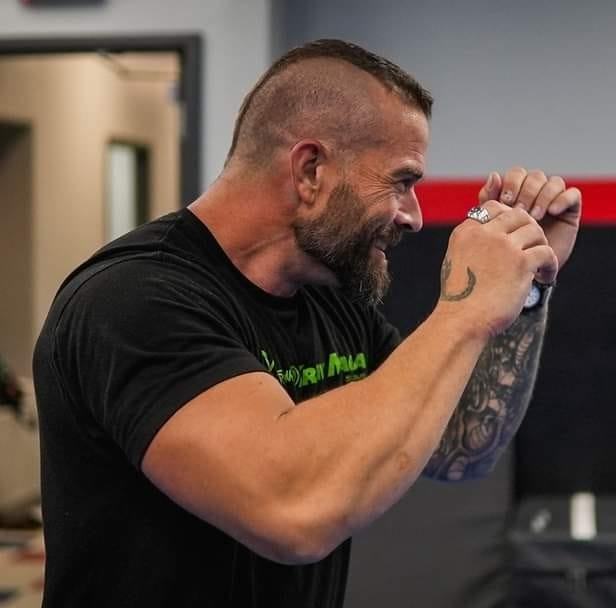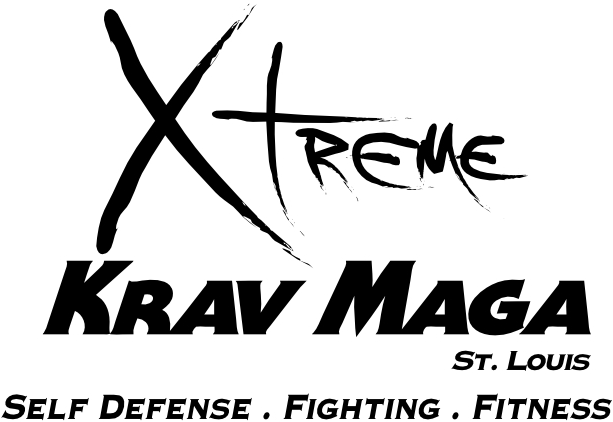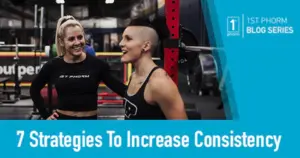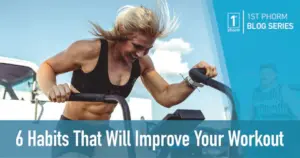Ok, when it comes to our health, fitness, and results … The most important aspects are following a good nutrition plan, working out consistently, drinking water, getting quality sleep, and supplementing where needed to support our lifestyle and goals.
That’s not anything you don’t know. And in today’s fitness world, the workout piece seems to get the most attention.
Whether it’s people posting their workouts on InstaGram, checking in at the gym on Facebook, downloading various apps for workout programs, group fitness classes being more popular than ever, and the simple fact that it’s typically the piece most people do consistently … there’s a lot of focus on the workout.
Now, this blog isn’t about nutrition … the importance of water … or how and why you should improve the quality of your sleep.
I put this blog together to cover another topic that is very important for your results. It’s one that doesn’t get talked nearly enough about, and for the longest time, I didn’t make it a priority in my routine either.
That is stretching … foam rolling … and mobilizing our bodies.
Flexibility and mobility are important pieces to an overall health and wellness plan, and most people “know” they should do it … but don’t (like I said, that was me for a long time).
Why?
For a few reasons. It’s uncomfortable, it takes time, it’s the “boring” side of fitness … but I think one of the biggest reasons is that people simply don’t know what to do, how to start, and the real impact it can have on their results.
When we don’t know that, it’s hard to make it a priority … that’s just the truth. But it’s also true that…
Good stretching and mobilization habits will help improve flexibility and mobility. This will help with improving muscle function, increase power, improve performance, help prevent injury and is key in overall health.
So that’s why I put this blog together, to go over stretching and mobilizing our bodies.
Keeping it simple, straight forward, and effective information that you can start using today!
HOW CAN YOU MAKE STRETCHING AND MOBILITY WORK PART OF YOUR ACTIVE LIFESTYLE?
Making it part of your lifestyle is the best way to make sure that you stick to it long term. If you’ve failed and making stretching and mobility part of your active lifestyle, you most likely tried to take on too much at once.
Maybe you were like me and would try to do 30 minutes a day … or spend an hour a few times a week … but then wouldn’t stick to it. The problem was that it was too much of a change too soon.
As in all areas of fitness, consistency is king. That’s why when I finally started focusing on just 10 minutes a day I started noticing the difference in how my body felt.
Think about that, 10 minutes a day … consistently!
At the end of the week, that was 70 minutes, which was about 70 more than I had been doing before! Is that more than you are doing right now?
So, the best way to include flexibility and mobility practices like stretching and mobilization work in your lifestyle is to develop habits just like you would with working out.
Start with a smaller, more manageable request of yourself (like 10 minutes a day), and then work up from there as you build the consistency and confidence from keeping your word to yourself.
This also prevents your mind from making up excuses on why not to do it … because 10 minutes sounds a lot easier to make time for than 30 minutes in your already busy schedule.
IMPROVING FLEXIBILITY AND MOBILITY
Ok, so when it comes to working on improving flexibility and mobility, there are multiple ways to go about this. All of them will have some different advantages, so I will go over them individually.
Remember though, if you aren’t doing anything at all, or very little, start with what you are most willing to stick to get started. Keep it simple.
No need to have some big huge complex plan.
Focus on starting with what you can do, consistently, and then as you progress we can change things up and get more detailed from there.
STRETCHING
Stretching is one of the most well-known athletic habits. Shoot, we started hearing about it in our first P.E. class in grade school!
But, most people don’t stretch consistently because it can be uncomfortable, painful and boring all at the same time. Most people don’t even give it a thought throughout the day to stretch, and the ones who do, try to get through it as fast as possible.
The truth is, it needs to become a priority if you’re looking to perform your best, look your best, and reduce the risk of injury.
Stretching can improve the range of motion for your limbs or joints, reduce stiffness and soreness, and help you prepare for different athletic activities.

There are a few types of stretching techniques, but the two you need to focus on the most are active/dynamic and static stretching.
Active stretching is moving into a stretched position for 3-5 seconds at a time for about 5-10 times. It’s usually best to do before exercise or cardio such as running, because it loosens up tight muscles and helps with proper body mechanics.
Static stretching is used more for lengthening tight muscles. This is typically done by holding a stretch for 20-30 seconds on an average, 60 seconds if needed, and doing so 3-5 times.
When stretching, ease into it. Remember, it takes a little time for various tissues to lengthen safely. So work into the stretch safely and avoid bouncing or quick/jerky movements.
Static stretching can restrict some neural control to muscle fibers, so it’s best to be done after exercise, first thing in the morning, or as you unwind before bed.
It’s best to stretch when the body is warmed up, so taking time after doing cardio, or a workout would be optimal.
You’ll also want to make sure not to hold your breath as you stretch … I struggled with that for a long time. Taking a few beginner yoga classes helped me learn how to maintain breathing throughout a stretch.
On day’s you’re not working out, pick a time of the day when it would be most convenient … once again, consistency is key.
FOAM ROLLING
Foam rolling, also called self-myofascial release, is a great way to help improve mobility and flexibility!
Although most people perform this technique using a foam roller (hence the name) – a long tubular accessory common in many yoga or cardio workout regimens – it can also be performed using a lacrosse ball, softball, or your own hands.
In a nutshell, foam rolling involves applying pressure to various points on your body, which aids in your muscle recovery and can help them return to normal function.
Most athletes have various trigger points or knots that form in their muscle groups. Especially if they are doing repetitive movements. Shoot, you might even notice you get knots in your traps and upper back from being hunched over a keyboard at work all day.
You’ll probably recognize these from well-known pain points where, if you press, you feel significant discomfort.
They’re basically cramps, except they form regularly and stick around for some time and can inhibit full range of motion.
Foam rolling involves pressing on these pain points to slowly unravel the muscles, essentially coaxing them back into a relaxed state.
By using a foam roller or similar tool, you can perform deep compression on tight muscles and break up the adhesions that form between various muscle tissue layers.
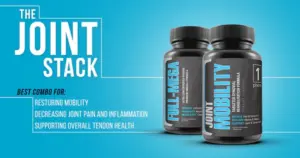
Naturally, this involves a little bit of discomfort … and sometimes a lot, which is yet again why some people avoid it altogether. For those who can work through the discomfort can receive a lot of relief and benefits.
BENEFITS OF FOAM ROLLING
Foam rolling, when done properly, will dissipate the pain you might feel in various muscle knots and can help muscles return to normal function.
Basically, if you tend to have tight muscles or can’t move with your same flexibility after working out, this recovery routine is a great fit for you.
I know for me, it can make me feel better almost immediately after a tough workout.
Although it does feel uncomfortable at first, learning the right technique and doing it consistently will help your body feel better, can result in a faster recovery and really improve your mobility!
HOW TO USE A FOAM ROLLER
To use a foam roll properly, you have to figure out where to actually apply the pressure.

Foam rolling involves targeting specific areas or muscle groups; these will usually be centered around the most active points in your body.
To start, make sure to apply moderate pressure to a specific muscle using both the roller (or another tool) and your body weight.
Roll the foam slowly across the muscle group: no more than an inch or so per second is a good rule of thumb.
As you locate painful or tight areas, stop the roller and pause for a few seconds. Consciously try to relax those muscle groups without relieving the pressure on the roller…. and remember, breath!
Then, continue along the rest of your body or muscle you’re working on.
If you have a muscle group that is too tight or painful to directly press down on, you can always shift the roller around and put pressure on the surrounding area instead.
This will gradually relax the surrounding muscles and may eventually lower the pain to a level where you can return the roller later. This might happen during the same session or over a period of several weeks.
Over time, you should be able to use the foam roller over the regular trouble spots of your body.
Be sure to give your muscles a break (and do some traditional stretching) if you feel like they’re too sore or exhausted.
WHEN TO USE A FOAM ROLL

You can use a foam roller about anytime you want. Some people will use it before their workout to help improve mobility and full range of motion!
Some will use it after a workout as part of their cool down to help reduce soreness.
Another popular time to foam roll is first thing in the morning. This can help work out stiff joints and muscles from a night of rest.
For me, I have been doing 10 minutes of mobility and flexibility work every morning for 8 months. About 3 out of 5 of those mornings I foam roll, while the other two I use a massage gun or stretch.
MASSAGE GUNS
Improving flexibility and mobility don’t stop with foam rolling or stretching…
A relatively new invention called the massage gun has begun making waves in the fitness industry and athletic sports teams across the world, and for good reason.
It’s very similar to the way that a foam roller works, although it has the potential to be a little more precise, thanks to the smaller size of the head and is a handheld device.
While you can always use your hand to massage your own muscles back to a relaxed state, a massage gun can often provide better results and in much better time.
Massage guns are simply an automated massage tool that provides pressure where you direct the vibrating head.
Some have converted power tools such as skill saws into a “massage gun.” I was, and still am a bit leary of that, but I do have some friends who love it.
Personally, I would rather purchase a massage gun that was built for that purpose.
Many massage guns have different settings and speeds. This allows you to customize your massage routine and can help you compensate for various particularly painful areas.
With a foam roller, you have to leave super painful areas alone or work on their sides since it’s difficult to adjust the pressure you use on the muscle groups.
With massage guns, you can flip a switch and have it vibrate at a much lower frequency to compensate.
You can also kick up the speed of the massage and really dig into your muscles if you find a tight spot that isn’t very painful.
Your speed will vary depending on the muscle group, soreness, etc … but a good rule of thumb is to always start slowly and increase from there.
BENEFITS
The benefits of a massage gun are very similar to those provided by a foam roller, although their added precision can potentially lead to even better results.
Massage guns can increase your muscle recovery rate thanks to stimulating blood flow and relaxing your muscle tissues. They can enhance your range of motion and mobility because of similar effects.
HOW TO USE MASSAGE GUNS
Using a massage gun is super easy. Depending on your model, you may have several different settings you can play around with.
When using a massage gun, it’s important to remember that you never need to press down too hard, or even at all; the vibrations from the massage gun head will do the work.
In fact, pressing down hard is more likely to cause minor injuries, which is not what you want.
WHEN TO USE MASSAGE GUNS
If you want to use your massage gun before your workout, you can think of them as a warm-up tool.
Massage guns can heighten the blood flow in targeted muscles, so using them directly on your legs or body part you are going to train can be beneficial!
You can also use your massage gun during a workout. This might be helpful if your body tends to stiffen up or get lots of cramps during certain exercise regimens or during runs.

Just be sure not to use the massage gun for too long during your workout, as you may decrease your performance.
After your workout, the massage gun can help relax your nervous system and loosen your muscles up.
Also helping to stimulate blood circulation and boosting nutrient delivery to the muscles that need it most.
Another time to use a massage gun is in the evening while you catch up on your favorite TV show or movie. For, me I like to do this on Sunday nights.
I’m not a big TV or movie watcher anymore … but spending some time on a Sunday evening to relax my mind and my body with a movie and massage is pretty nice!
STARTING A MOBILITY ROUTINE
All three options – stretching, foam rolling, massage guns – can help you improve your flexibility and mobility.
This will ultimately help you feel better, perform better, and reduce the risk of injury or setback as you work towards your goals.
Stretching is by far the easiest to get started with as it doesn’t require any equipment.
When it comes to foam rolling or massage guns, and the fact the benefits are similar … you can simply pick one to start with and get the majority of the benefits.
Oh and don’t forget that a lacrosse ball, softball, or another similar object can be used for self-myofascial release as well.
Using a combination of all three of these approaches will go a long way toward increasing your flexibility, mobility, and improving how your body feels every day.
Just keep in mind, consistency is key here.
Figuring out when and how to work these into your lifestyle is up to you. Like I said above, for me, I’ve been doing 10 minutes in the morning … made it a habit … and now have it part of my active lifestyle!
But if that doesn’t work for you, or another time is better because you will do it more consistently, then do that!
If you want to talk through your plan and figure out how you can work on flexibility and mobility, call us at 1-800-409-9732 and talk with one of our NASM Certified Personal Trainers for free!
You can always email us as well at [email protected]!












































